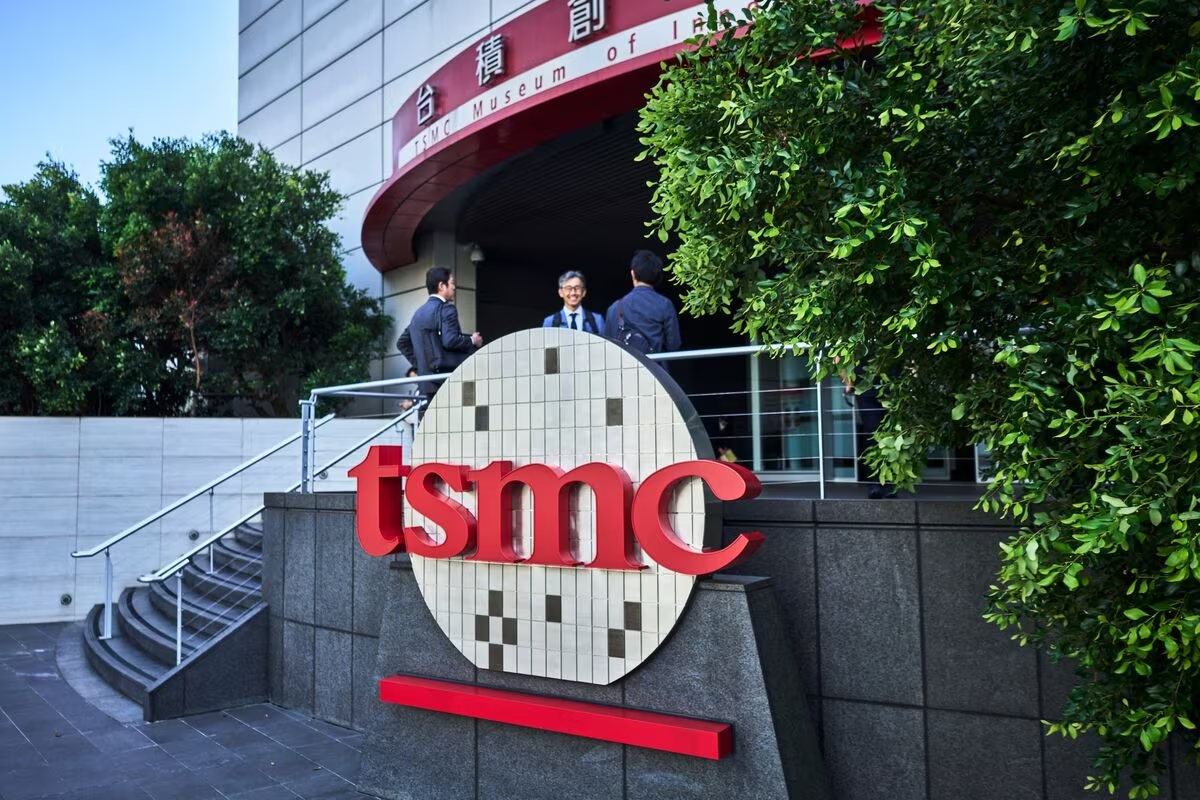TSMC Reports Deceleration in Monthly Revenue Growth
Taiwan Semiconductor Manufacturing Co. (TSMC), the world’s leading contract chip manufacturer, has reported a moderation in its monthly revenue growth rate. This deceleration, detailed in the latest financial filing, has immediately injected a note of caution into the market regarding the sustained, explosive demand for Artificial Intelligence (AI) accelerators—the very components driving much of the recent tech sector optimism.
While TSMC remains the critical foundry partner for virtually every major AI chip designer, including industry giant Nvidia Corp., the slowing pace of sales expansion suggests that the hyper-growth phase seen earlier in 2025 might be leveling off, or that inventory adjustments are underway among key customers.

The Numbers Behind the Caution
Although the specific figures for the reporting period (likely October 2025 sales) still indicate year-over-year growth, the rate of increase was notably slower than the preceding months. For investors and analysts tracking the AI supply chain, TSMC’s monthly sales figures serve as a crucial barometer for global technology demand. A slowdown in the growth trajectory, even if overall sales remain high, is often interpreted as a sign that the initial rush to build out AI infrastructure may be stabilizing.
TSMC’s performance is intrinsically linked to the demand for the most advanced process nodes—specifically 3nm and 5nm technology—which are required for powerful AI chips, central processing units (CPUs), and graphics processing units (GPUs). Any fluctuation in the company’s revenue growth directly reflects purchasing decisions made by its largest clients, who are currently racing to dominate the AI market.
Why TSMC’s Data Matters
TSMC’s dominant position in the foundry market means its revenue figures are not just company news; they are a proxy for the health of the entire global technology ecosystem. The company manufactures nearly all of the world’s most sophisticated chips, including those used in high-end servers, smartphones, and automotive applications. Therefore, a moderation in growth signals several potential scenarios:
- Inventory Normalization: Key customers may have built up sufficient inventory of AI chips and are now slowing down new orders. This is a natural cyclical adjustment following a massive ordering surge.
- Macroeconomic Headwinds: Broader economic uncertainty could be causing enterprise clients to delay large-scale data center infrastructure investments.
- Competitive Landscape: While unlikely to be the primary driver, increased competition in mature nodes could slightly impact overall revenue mix.
The AI Demand Paradox: Moderation vs. Optimism
The reported moderation creates a paradox, contrasting sharply with the continued, aggressive optimism voiced by major industry players. Companies like Nvidia Corp., which relies heavily on TSMC for manufacturing its flagship AI accelerators, continue to project massive, sustained growth in the demand for AI hardware.
Nvidia and other AI chip designers argue that the current build-out is only the beginning of a multi-year cycle driven by the widespread adoption of generative AI and large language models (LLMs). They maintain that demand for their products—and thus for TSMC’s advanced manufacturing capacity—will remain robust well into 2026.
However, TSMC’s sales figures suggest that the pace of procurement might be becoming more measured. This indicates that while the long-term outlook for AI remains strong, the short-term quarterly volatility inherent in massive infrastructure spending is starting to manifest.
“The market has priced in near-infinite growth for AI infrastructure. When the primary manufacturer reports even a slight slowdown in the rate of growth, it forces a necessary re-evaluation of short-term inventory cycles and capital expenditure timelines across the entire tech sector.”
Broader Market Implications
This news is being closely watched by investors globally, particularly those holding shares in companies highly dependent on TSMC’s capacity, such as Apple, AMD, and Qualcomm, in addition to Nvidia.
If the moderation trend persists, it could signal a shift in investment strategy among hyperscalers (Google, Amazon, Microsoft). These companies are TSMC’s ultimate customers, driving the demand for AI accelerators to power their cloud services. A slowdown could mean:
- Reduced Capital Expenditure (CapEx): Hyperscalers might be slowing their CapEx spending on new data centers after an aggressive ramp-up period.
- Focus on Optimization: Companies may be shifting focus from simply acquiring chips to optimizing the utilization of the vast inventories they have already accumulated.
- Supply Chain Stability: Paradoxically, a slight moderation could help stabilize the supply chain, which has struggled to keep up with unprecedented AI demand, potentially easing pressure on lead times for other crucial components.

Key Takeaways for the Tech Sector
The latest revenue data from TSMC underscores the complexity of forecasting growth in the nascent, yet rapidly expanding, AI market. While the long-term trajectory remains positive, investors must account for cyclical volatility.
- Growth Rate Deceleration: TSMC’s monthly revenue growth rate has slowed down compared to previous periods in 2025, signaling a potential cooling of immediate procurement intensity.
- AI Sustainability Questioned: The data raises legitimate questions about the short-term sustainability of the exponential growth rates previously assumed for AI hardware demand.
- Nvidia’s Position: Despite the foundry slowdown, major clients like Nvidia continue to express confidence in long-term AI market expansion.
- Market Bellwether: TSMC’s performance remains the most reliable indicator of real-world demand for cutting-edge semiconductor technology.
Outlook: A Shift from Rush to Rhythm
Experts suggest this is less a sign of the AI boom ending and more an indication that the market is transitioning from a frantic, immediate procurement rush to a more predictable, rhythmic build-out phase. The initial urgency to secure capacity for foundational AI models may be subsiding, allowing the supply chain to catch up and customers to digest their current inventories.
Moving into 2026, the focus will shift to how quickly new AI applications drive subsequent waves of demand, particularly as smaller enterprises and specialized industries begin their own large-scale AI adoption. TSMC’s next quarterly earnings report will be crucial in determining if this moderation is a temporary inventory correction or a sustained trend in the global chip market.
Original author: Debby Wu
Originally published: November 10, 2025
Editorial note: Our team reviewed and enhanced this coverage with AI-assisted tools and human editing to add helpful context while preserving verified facts and quotations from the original source.
We encourage you to consult the publisher above for the complete report and to reach out if you spot inaccuracies or compliance concerns.

